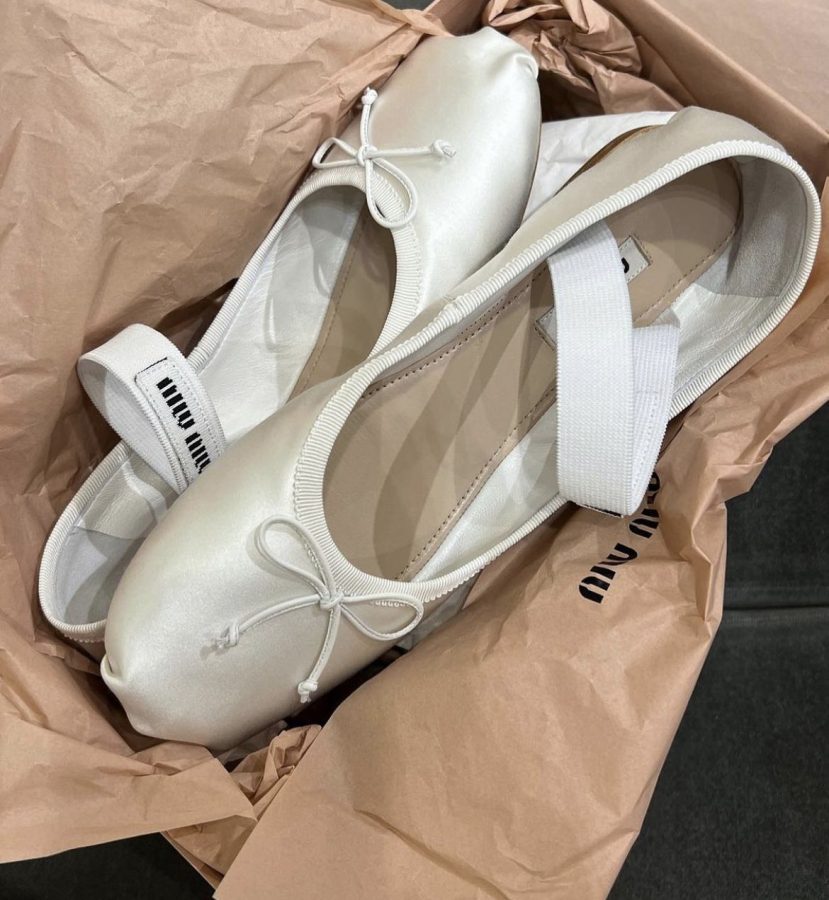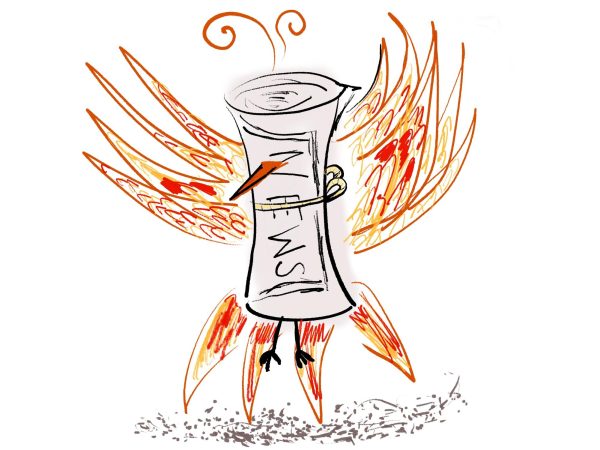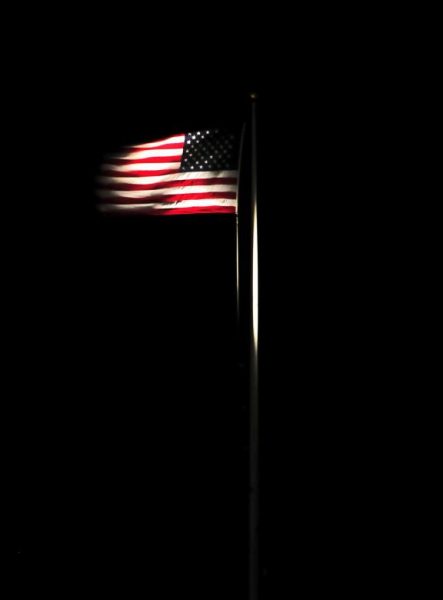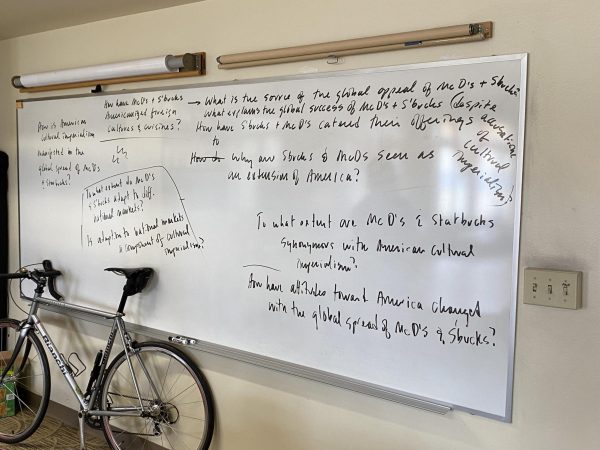Balletcore: A Trend Spinning Out of Control
Balletcore fashion undermines the art form and disregards ballet’s troubled history.
Miu Miu, a high fashion brand, released their viral satin ballet flats in 2016, which bear a resemblance to the classic pointe shoe.
Knit leg warmers layered over pink tights, wrap skirts paired with bodysuits, slick back buns with gel — and don’t forget the ballet flats in pastel pink, purple, and blue with chunky leg warmers. These fashion trends have recently surfaced in streetwear and all hint towards one style trend: balletcore.
Balletcore is a combination of ballet clothing and accessories turned into streetwear fashion, and it’s not the first time ballet is trending in fashion. The current balletcore trend overlooks ballet’s unacceptable ideas surrounding disorder eating as it feeds into the stereotype that ballet is a superficial activity, with its frivolous lace and pink colors. Those same colors highlight the history of problematic ideas the art form has surrounding race.
Ballet is a complex art form that has been around for nearly 600 years. It emerged during the Italian Renaissance in the 15th century and quickly found popularity in France, according to the Atlanta Ballet. At that time, practices such as black and yellow face were widely used, and as ballet grew, these actions continued into the modern day.
The issue is that designers that take advantage of balletcore completely disregard the long history ballet has with racism. In 2015, the Paris Opera Ballet faced backlash for not only their usage of blackface but also the lack of diversity they had in the ranks of the company. According to the New York Times, only in recent years have large ballet companies like the Paris Opera Ballet and Bolshoi Ballet addressed racist actions they utilized in past performances, including blackface and yellowface.
Although the Paris Opera Ballet made efforts to end these practices, their latest usage was in 2015. Other ballet companies such as Bolshoi, when called out in 2019, argued that it was acceptable as that was how ballets had been historically performed in Russia.
This idea of maintaining tradition is woven into much of ballet, through the precise technique and even the attire. In many ballet classes around the world, there is often a requirement to wear pink ballet tights and pink ballet flats. According to BalletMet, a ballet company based in Ohio, tights were crafted to match the dancer’s skin tone. At the time ballet was mainly based in Europe so, tights were designed to be pale-skinned, in order to elongate their lines while remaining modest.
As ballet spread into the Western world and companies began to grow more diverse, the standard for pink tights and shoes simply did not work for all dancers. Recently, there have been steps taken to allow dancers to wear tights and pointe shoes that match their skin tone. However, balletcore neglects this horrendous history of ballet and only focuses on surface-level pastel colors, classic ballet pink, along with light blues and purples. It is necessary that before partaking in the trend, designers fully acknowledge ballet’s history.
Unlike many other brands, designer Sandy Liang appropriately took inspiration from ballet. Liang not only attended a performance but her designs inspired by ballet are inclusive.
Liang released her Mary Jane Pointes in 2022, which quickly sold out. Like many other brands, this shoe was modeled after a pointe shoe. The shoe is offered in satin and leather. Of course, it is available in classic ballet pink and black, but also in a light tan and brown color.
Liang also took time to appreciate the art and the hard work dancers put into it before her initial release of the shoe. She was able to recognize that ballet is much more than a trivial hobby.
A few years ago, Isabella Boylston, a principal dancer for the American Ballet Theater (ABT), invited Liang to a performance. According to Fashionista, Liang was inspired after the performance, thinking, “What if we made a Mary Jane with a true pointe toe, with the structure[?]” Liang then took the time to expand her original idea of the shoe to represent an actual pointe shoe.
Boylston appreciated her dedication to understanding ballet thoroughly before profiting off it, and after Liang’s Spring 2023 show, Bolyston said, “I feel like Sandy has actually taken the time to come to shows and get to know a little bit about my art form.” Liang took an extra step to acknowledge what she was taking inspiration from — this is a step in the right direction.
Taking inspiration from ballet while maintaining the sophistication of the art is not harmful. Emi Ayla-Sekiguchi (‘24), who has been dancing for 10 years, noted that “it would be great if more people start going to ballets or start taking classes, inspired by this movement.”
Some dancers agree that balletcore feeds into the stereotype that ballet is an easy activity and simplifies the art. Bela Gowda (‘24), a current dancer for Bishop’s Performing Dance Group (PDG), said that she felt “like having a fashion style with pinks and skirts and all these pastel colors make ballet seem prissy and not a sport.” She added, “Dancers wear those clothes to move around easily, not look pretty… making an entire trend out of [ballet] feels disrespectful because ballet is so much more than the clothes that you wear while doing it.”
Emi agreed, “The danger of ballet being a fashion trend is that ballet will be more popularly regarded as just a surface-level cute, pink, pretty thing.” Balletcore portrays ballet as a hobby, not a complex art form that requires intense physical training.
As someone who has done ballet for 10 years, I have encountered those who believe that ballet is not as difficult as it truly is. I owe that to the fact that one of the ultimate goals of ballet is to perform steps with the illusion of grace and effortlessness. Despite muscles being painfully sore, feet hurting, and it’s the seventh hour of rehearsal, a dancer will, to the best of their abilities, dance with fluency and elegance, which often causes spectators to believe that ballet is much easier than it actually is.
Ballet became a trend after the successful premiere of Ballet Russes in 1909 by Sergei Diaghilev and a tour by Russian ballerina Anna Pavlova. This manifested itself as “balletomania,” an intense passion for ballet.
This “balletomania,” worked its way into the fashion industry. Since then, ballet and fashion have been deeply intertwined. Between 1930 and 1970, as Russian imperial ballet spread to the United States and the United Kingdom, haute couture began to look “to classical ballets such as Giselle, Swan Lake, and Sleeping Beauty, while sportswear designers took their cues from contemporary ballets performed in streamlined practice wear,” Patricia Mears wrote as part of her collection displaying ballet in fashion at the Museum at the Fashion Institute of Technology.
Ballet-inspired fashion has maintained a presence in the fashion world for many years. This presence included the “modern ideals of beauty and grace, seamlessly encased in a sleek and enviably toned physique,” according to Mears’ exhibition. Unfortunately, this “physique” is highly ingrained in ballet culture. Designers should understand that balletcore, in a sense, is an ode to the traditional ideas of perfectionism and the “ballet body,” which are the root of many mental health issues in the art.
In a study published in The Professional Counselor, the official journal of the National Board for Certified Counselors, Inc. and Affiliates (NBCC), four current ballet dancers and four retired ballet dancers, all anonymous, were asked questions about mental health in ballet. The participants noted that there was a sense that ballet is “so glamorous and [dancers] have this perfect life,” and society does “not see everything that goes on underneath.”
Behind the scenes in ballet, there is often “anxiety, depression, trauma, abuse, and perfectionism,” which can lead to “restrictive eating or other types of eating disorders.” Yet, the participants felt as if there had been efforts to end the idea of the perfect body, “overcoming long-lasting traditions in ballet culture of “skinny equals better” required significant change.”
Balletcore promotes an art form that romanticizes disordered eating, as well as the superficial aspects of ballet. Additionally, its focus on pale pink, emphasizes the racist history the art has. Ballet is slowly making its way into modern times. However, the art is still behind.

Bella Gallus is a senior and the Managing Editor for The Tower. Bella relies on her Spotify playlists, carefully curated for each of her moods, and her...







